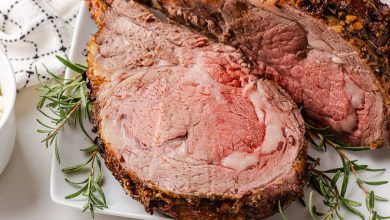Pork Fresh Varieties – Meat by-Products (Frozen, Cooked, Simmered Ears)
Pork ears, often considered a delicacy in various cultures, are a unique yet flavorful meat by-product. They are typically frozen, cooked, and simmered to achieve a tender texture while retaining their rich, savory taste. While pork ears are not commonly featured in mainstream recipes, they are beloved in certain regional and traditional dishes, offering a hearty and satisfying component to a variety of meals.
Nutritional Breakdown (Per 100g):
| Nutrient | Amount |
|---|---|
| Energy | 166 kcal |
| Protein | 15.95 g |
| Total Fat | 10.8 g |
| Saturated Fat | 3.86 g |
| Carbohydrates | 0.2 g |
| Dietary Fiber | 0.0 g |
| Sugar | 0.0 g |
| Calcium | 18.0 mg |
| Iron | 1.5 mg |
| Magnesium | 7 mg |
| Phosphorus | 24.0 mg |
| Potassium | 40.0 mg |
| Sodium | 167.0 mg |
| Zinc | 0.2 mg |
| Copper | 0.006 mg |
| Manganese | 0.01 mg |
| Selenium | 4.4 mcg |
| Vitamin C | 0.0 mg |
| Thiamine (Vitamin B1) | 0.02 mg |
| Riboflavin (Vitamin B2) | 0.07 mg |
| Niacin (Vitamin B3) | 0.56 mg |
| Vitamin B6 | 0.01 mg |
| Folate | 0.0 mcg |
| Vitamin B12 | 0.04 mcg |
| Vitamin A | 0.0 mcg |
| Vitamin E | 0.0 mg |
| Vitamin D2 | 0.0 mcg |
Allergen Information:
Pork ears themselves are not inherently allergenic, but they are derived from pork, so individuals with pork allergies should avoid this product. Always ensure that the product is processed in a facility free from cross-contamination with other allergens, particularly if you are unsure about the ingredient sourcing.
Dietary Preferences:
- Gluten-Free: Pork ears are naturally gluten-free, making them a safe option for individuals with gluten intolerance or celiac disease.
- Low-Carb: With only 0.2g of carbohydrates per 100g, pork ears are suitable for those on low-carb or ketogenic diets.
- High-Protein: A rich source of protein, making it ideal for individuals seeking to increase their protein intake, especially in high-protein, low-carb meal plans.
- Paleo and Keto-Friendly: Given their minimal processing and high protein content, pork ears fit within both paleo and keto diets, focusing on whole foods and natural fats.
Cooking and Usage Tips:
Pork ears are often simmered to tenderize the tough tissue. They can be enjoyed in a variety of dishes, from stews and soups to being fried or grilled. In many Asian and Southern dishes, they are pickled or cooked with spices to infuse flavor. When preparing pork ears at home, be sure to cook them thoroughly to enhance both texture and taste.
- For a Southern-style treat, try simmering the pork ears with a rich, flavorful broth, then fry them for added texture and crunch.
- In Asian cuisine, they may be braised with soy sauce, garlic, and ginger for a savory, umami-rich dish.
Pork ears are versatile and can be served as a snack, appetizer, or incorporated into hearty stews or soups. Whether you’re exploring new cuts of meat or seeking to create a traditional dish, pork ears offer a unique, flavorful option.
Conclusion:
Pork ears are a nutritious, protein-packed option for adventurous eaters and those looking to explore new culinary horizons. With minimal carbohydrates, a modest amount of fat, and a variety of essential minerals, pork ears provide an interesting and satisfying ingredient to incorporate into various dishes. Whether you’re enjoying them as part of a family recipe or experimenting with new flavors, pork ears are a delicious, nutrient-rich food source that deserves a place in the kitchen.










